- Son Dakika
- Gündem
- Ekonomi
- Finans
- Yazarlar
- Sektörel
- Kültür-Sanat
- Dünya
- Teknoloji
- FOTOĞRAF GALERİSİ
- VİDEO GALERİSİ
- e-Gazete
Gelişmelerden haberdar olmak için İstanbul Ticaret Haberleri uygulamasını indirin

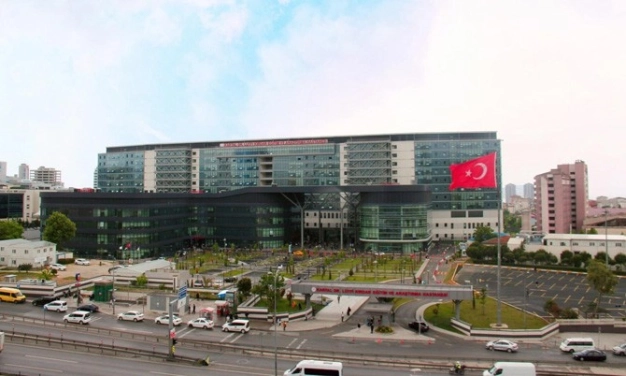 Turkey has been providing services to numerous foreign patients as part of the health tourism. As a frequent destination of many local and international patients, Istanbul is mentioned most often with the investments in health in the city, especially with the city hospitals. Seven more large hospitals have been launched within six months in the city where the pandemic has been felt the most. These medical facilities are expected to contribute severely to the fight against the pandemic and the normalization process. After the pandemic, they will continue to serve health tourism, and during the cases of probable epidemics and natural disasters.
Turkey has been providing services to numerous foreign patients as part of the health tourism. As a frequent destination of many local and international patients, Istanbul is mentioned most often with the investments in health in the city, especially with the city hospitals. Seven more large hospitals have been launched within six months in the city where the pandemic has been felt the most. These medical facilities are expected to contribute severely to the fight against the pandemic and the normalization process. After the pandemic, they will continue to serve health tourism, and during the cases of probable epidemics and natural disasters.
 KARTAL DR. LÜTFİ KIRDAR CITY HOSPITAL
KARTAL DR. LÜTFİ KIRDAR CITY HOSPITAL
Yearly 3.5 million patients to be treated
This hospital serves the patients with 153 intensive care unit beds, a 1.105 bed capacity in total, and with its 3 thousand 775 staff. 858 doctors and 1.077 nurses serve in the hospital containing 145 intensive care unit beds, an outpatient capacity for 250 patients, 45 operating rooms, and 110 beds are allocated for emergency medical hold. Dr. Lütfi Kırdar City Hospital is a well-equipped hospital with a superior infrastructure. Yearly, 3.5 million patients will be receiving ambulatory care, while 150 thousand in-patient treatments will be delivered in the hospital. Last but not least, with the 855 seismic isolators located in the basement of the building, this hospital is one of Istanbul’s most earthquake-resistant medical facilities.
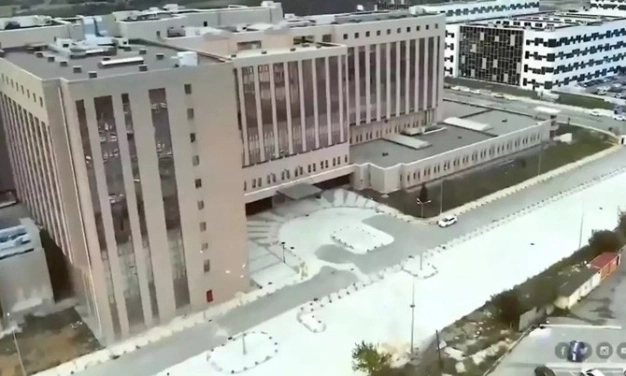 PROF. ASAF ATASEVEN HOSPITAL OF MARMARA UNIVERSITY
PROF. ASAF ATASEVEN HOSPITAL OF MARMARA UNIVERSITY
Earthquake-resistant with 827 seismic isolators
Prof. Asaf Ataseven Hospital of Marmara University will be fully operational with 155 clinics, 535 beds (60 ICU beds and 304 beds in rooms), and 28 operating rooms. The hospital was rendered earthquake-resistant with the installation of 827 seismic isolators.
 HADIMKÖY DR. İSMAİL NİYAZİ KURTULMUŞ HOSPITAL
HADIMKÖY DR. İSMAİL NİYAZİ KURTULMUŞ HOSPITAL
Restored in merely 45 days
Commissioned by Sultan Abdul Hamid II in 1881 and served as a military hospital until 1985, the historical Hadımköy Military Hospital restored its original condition in only 45 days and launched again. The hospital is named after Dr. İsmail Niyazi Kurtulmuş, who had devoted his whole life to kindness and healing patients. Built over 23 acres, Hadımköy Dr. İsmail Niyazi Kurtulmuş Hospital has an indoor space of 4 thousand and 500 square meters. This hospital, with 59 ICU beds and 101 bed capacity in total, shall serve as a smart building.
ISTANBUL MEDENİYET UNIVERSITY GÖZTEPE TRAINING AND RESEARCH HOSPITAL
A helicopter pad for patient transport
Istanbul Medeniyet University Göztepe Training and Research Hospital will be the medical base of the Anatolian part of the city.Planned over an indoor area of 245 thousand and 667 square meters, the hospital will perform with 80 ICU beds and 604 beds in total, 175 clinics, 27 operation rooms, and 52 emergency service beds in the first stage. Upon the completion of the second stage, it will reach a 1.116-bed capacity, 239 clinic rooms, 28 operating theaters, and 38 delivery rooms. Offering services in cardiovascular surgery, wound care and treatment and serving as a stroke clinic, this hospital will be capable of meeting the circulation of 6-7 thousand patients. A helicopter pad will also be included in the campus to transfer patients from other cities and countries.
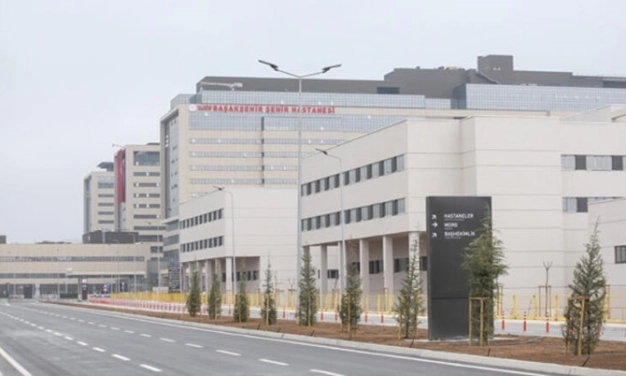 ISTANBUL BAŞAKŞEHİR CITY HOSPITAL
ISTANBUL BAŞAKŞEHİR CITY HOSPITAL
Daily 35 thousand patient admission
The overall bed capacity of the Başakşehir City Hospital is 2 thousand 682. 725 examination rooms, 3 hybrid surgery rooms, and 90 operating rooms in total, 28 delivery rooms, and 16 burn units. The hospital is capable of serving 35 thousand patients per day.With its 2 thousand and 800 seismic insulators, it is the “World’s Largest Seismically Isolated Building.” In this way, hospital services, including the surgeries, will not be interrupted during the earthquakes.
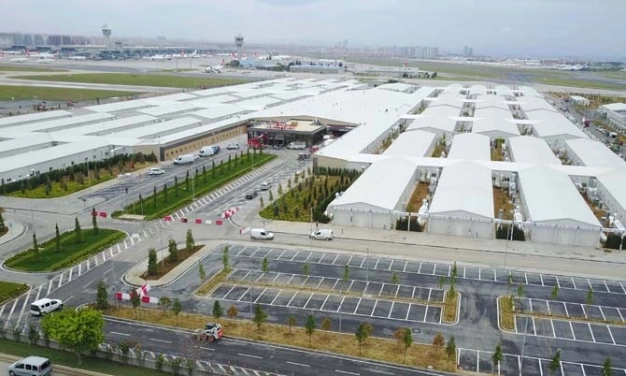 PROF. DR. FERİHA ÖZ EMERGENCY HOSPITAL
PROF. DR. FERİHA ÖZ EMERGENCY HOSPITAL
All rooms transformable to ICU units
The hospital was named after Feriha Öz, a world-renowned former professor of pathology, who died from Covid-19 pandemic. It is a one-story earthquake-resistant hospital that will be available for performing during epidemics, earthquakes, and natural disasters. The hospital building was founded over an area of 75 thousand square meters, and a 1.008-bed hospital was designed to enable the transformation of all its rooms into ICU units. With a strategic location due to its proximity to Sabiha Gökçen Airport, the help of the landing strips near the patients from other cities and countries will be able to receive treatment immediately upon their arrival.
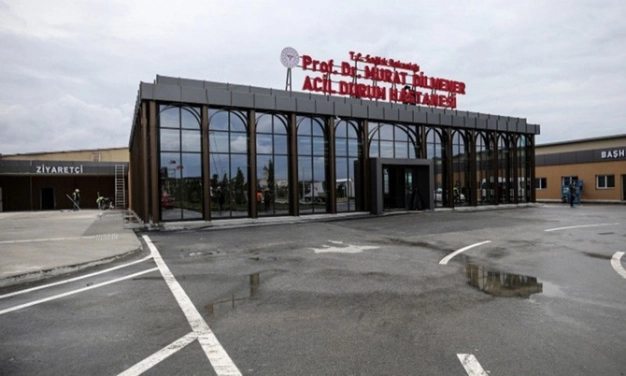 PROF. DR. MURAT DİLMENER EMERGENCY HOSPITAL
PROF. DR. MURAT DİLMENER EMERGENCY HOSPITAL
Airport compound transformed into an emergency hospital
Built on the premises of Atatürk Airport, Prof. Dr. Murat Dilmener Emergency Hospital is an impressive modern structure with a horizontal architecture. Equipped with state-of-the-art medical technologies, the hospital covers an area of 125 thousand square meters. The one-story building with an indoor space of 75 thousand square meters is surrounded by a landscape and parking lot covering 50 thousand square meters. The hospital features 1.008 beds in total, 16 operating theaters, 576 ensuite bedrooms with 36 rooms installed with dialysis and intensive care equipment. There are 432 intensive care beds including 36 installed with dialysis and negative-pressure, 36 emergency medical hold beds, eight triage rooms, two CRP rooms, 2 X-ray rooms, 28 mobile x-rays, 4 tomography rooms, 3 BT, 4 MR rooms, 3 ECMO and laboratories included in the hospital. The patients’ transfer by helicopters and ambulance aircraft is available, thanks to the hospital’s helicopter pad. A guest house with 342-bed capacity and a lodgement area was planned for the hospital as well.